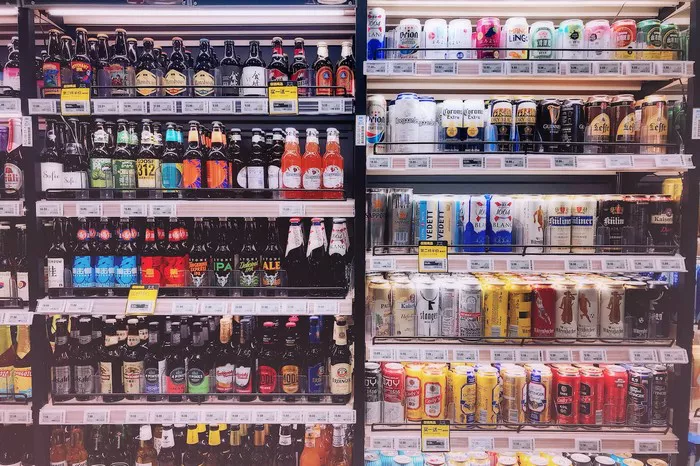When it comes to enjoying a Negroni, a classic cocktail with a storied history, many aficionados relish its distinct flavor profile. However, for those conscious about their health or monitoring their calorie intake, the question often arises: How many calories are in a cup of Negroni? Understanding the caloric content of this beloved beverage can empower individuals to make informed choices without sacrificing the pleasure of indulging in a well-crafted cocktail.
The Negroni: A Classic Cocktail with a Twist
Before delving into the caloric content of a Negroni, it’s essential to appreciate the cocktail’s origins and ingredients. The Negroni traces its roots back to early 20th-century Italy, where Count Camillo Negroni allegedly requested a stronger version of the Americano by replacing soda water with gin. Thus, the Negroni was born, featuring equal parts gin, sweet vermouth, and Campari, garnished with an orange peel.
Deconstructing the Caloric Components
To ascertain the caloric content of a Negroni accurately, it’s crucial to analyze each ingredient’s contribution. Gin, a staple spirit in the Negroni, typically contains around 97 calories per 1.5-ounce (44 ml) serving. Sweet vermouth, a fortified wine infused with botanicals and sweetened with sugar, contributes approximately 64 calories per ounce (30 ml). Lastly, Campari, a bitter liqueur renowned for its vibrant red hue, adds roughly 68 calories per ounce (30 ml). When combined in equal parts, these ingredients yield a cocktail with a notable caloric density.
See Also: where is heineken from
Calculating the Total Caloric Load
With the caloric values of each ingredient in mind, determining the total caloric content of a Negroni becomes a straightforward arithmetic exercise. By summing the caloric contributions of gin, sweet vermouth, and Campari, one can arrive at an approximate figure. For instance, if each ingredient is measured at 1.5 ounces (44 ml), the total caloric load would be approximately 229 calories per serving. However, variations in serving size and ingredient proportions can influence the final tally.
Navigating Variations and Modifications
While the classic Negroni recipe adheres to equal parts of gin, sweet vermouth, and Campari, variations and modifications abound in the realm of mixology. Some enthusiasts opt for a lighter touch of Campari to temper the cocktail’s bitterness, while others experiment with alternative spirits or flavor enhancers. These deviations can introduce variability into the caloric content of a Negroni, necessitating careful consideration when assessing its dietary impact.
Mindful Consumption and Moderation
In the quest to ascertain the caloric content of a Negroni, it’s imperative to underscore the broader principles of mindful consumption and moderation. While indulging in a cocktail or two can be a pleasurable social ritual, excessive alcohol consumption can have adverse health effects and contribute to weight gain. By savoring a Negroni in moderation and complementing it with a balanced diet and active lifestyle, individuals can strike a harmonious balance between enjoyment and well-being.
Nutritional Considerations and Alternatives
Beyond calorie counting, it’s essential to consider the nutritional profile of a Negroni and explore alternative libations that align with specific dietary preferences or restrictions. For those seeking lower-calorie options, substituting ingredients or opting for spirit-forward cocktails with fewer modifiers can help mitigate the caloric load. Additionally, incorporating fresh herbs, fruits, or botanical infusions can enhance flavor complexity without significantly increasing caloric intake.
Educating Consumers and Promoting Transparency
As consumers increasingly prioritize health-conscious choices, the beverage industry faces growing pressure to provide transparent nutritional information. By equipping consumers with accurate data on the caloric content of popular cocktails like the Negroni, producers and establishments can foster greater trust and loyalty among their clientele. Moreover, initiatives to standardize labeling practices and promote nutritional awareness can empower individuals to make informed decisions about their beverage consumption.
Culinary Creativity and Culinary Creativity
In the realm of mixology, creativity knows no bounds, with bartenders continuously pushing the boundaries of flavor innovation and craftsmanship. While the classic Negroni remains a timeless favorite, the evolving landscape of cocktail culture offers boundless opportunities for experimentation and discovery. From barrel-aged variations to artisanal infusions, the world of cocktails invites enthusiasts to embark on a sensory journey rich in tradition, technique, and imagination.
Conclusion
In conclusion, the question of how many calories are in a cup of Negroni underscores the intersection of culinary enjoyment and nutritional awareness.By deconstructing its ingredients, calculating its caloric load, and exploring variations and alternatives, individuals can make informed choices that align with their dietary goals and preferences. Whether sipped leisurely at a bustling bar or crafted with care at home, the Negroni embodies the timeless allure of cocktail culture—a harmonious blend of tradition, flavor, and conviviality.


